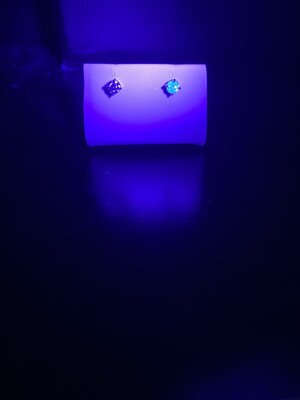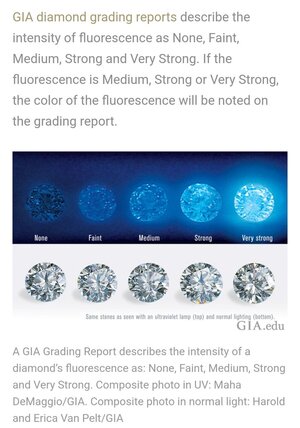Sprinkles&Stones
Brilliant_Rock
- Joined
- May 19, 2020
- Messages
- 1,993
Hi!
I just got my beautiful WF ACA studs. Of course being a PSer, first thing I do is whip out the loupe and my black light.
I noticed one of the diamonds lights up bright blue under my fluorescence black light. I don’t mind it, but when I checked both my AGS reports I see both of the diamonds are listed as “Fluorescence : Negligible”.
My stud seems to light up to the same level as my other GIA diamonds graded with medium and strong fluorescence.
My question is: how strict is the AGS when grading fluorescence? To me, negligible would be barely visible under black light, not bright blue.
Should I be worried that something is amiss? Is this normal for WF ACA diamonds, or normal for AGS to not match?

I just got my beautiful WF ACA studs. Of course being a PSer, first thing I do is whip out the loupe and my black light.
I noticed one of the diamonds lights up bright blue under my fluorescence black light. I don’t mind it, but when I checked both my AGS reports I see both of the diamonds are listed as “Fluorescence : Negligible”.
My stud seems to light up to the same level as my other GIA diamonds graded with medium and strong fluorescence.
My question is: how strict is the AGS when grading fluorescence? To me, negligible would be barely visible under black light, not bright blue.
Should I be worried that something is amiss? Is this normal for WF ACA diamonds, or normal for AGS to not match?









300x240.png)